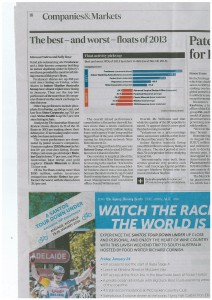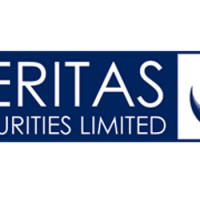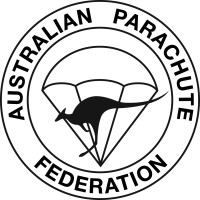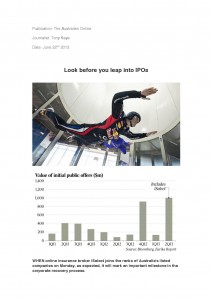Written by Tony Featherstone
The trickle of larger IPOs has turned into a flood. Barely a day passes without another float being launched and larger offers that had been shelved being repackaged for sale. Although each float should be assessed on its merits, the sheer volume of IPOs is cause for alarm.
I prefer investing in floats at the start of the IPO cycle, when better-quality companies are offered at fairer valuations, rather than in bull market conditions when advisers will float anything to earn a fee. But this latest IPO cycle has become incredibly compressed as sellers rush for the exits.
That does not mean investors should avoid all floats. There have been several terrific performers this year: Virtus Health, Steadfast Group, Shine Corporate and OzForex Group and a handful of other floats are well up on their issue price in a rising sharemarket over 2013.
Nevertheless, the float mania gripping Australian and global sharemarkets means investors need to be extra-careful when investing in IPOs. Jeremy Grantham, the legendary investor and chief investment strategist at US-based asset consultant GMO, this week cautioned investors about the IPO boom.
In his firm’s quarterly letter to investors, Grantham wrote: “We have also had a sharp and unexpected uptick in parts of the IPO market in the US, so I would think we are probably in the slow build-up to something interesting – a badly overpriced market and bubble conditions.”
Grantham added: “My personal guess is that the US market, especially the non-blue chips, will work its way higher, perhaps by 20 per cent to 30 per cent in the next year or, more likely, two years, with the rest of the world, including emerging-market equities, covering even more ground in at least a partial catch-up. And then we will have the third in the series of serious market busts since 1999.”
If Grantham is right, Australian investors could be buying IPOs this year and next near peak valuations, and taking a gamble. Again, some IPOs will be well worth that risk, but many more could be overpriced dogs cashing in on the latest bout of float hype.
One worthwhile strategy is focusing on recently listed micro-cap stocks that have a low market profile. It always amazes me how the market so quickly gives up on small IPOs if they have a poor debut or trade below their issue price within months of listing – even though some are much better value.
Or how the market sometimes takes so long to pick up on better-performing recently listed companies. Indoor Skydive Australia Group and Osprey Medical – two micro-caps I covered for The Bull earlier this year, are good examples. Both have rallied since listing, but still have a low investment profile.
Indoor Skydive sought $12 million last year through an IPO to build Australia’s first simulated skydiving attraction at Penrith, western Sydney. Its 20-cent issued shares have rallied to 59 cents, (they were 35 cents when The Bull wrote about Indoor Skydive in February).
I wrote at the time: “Indoor Skydive is obviously speculative. But unlike many micro-caps, it at least has a product that has had strong success overseas, has a well-regarded board, and is potentially within 12 to 18 months of first revenue.”
The response to an early-bird sale for its attraction, expected to open next year, shows the potential. Five hundred hours of wind-tunnel usage, worth $400,000, was sold out within four days. Anybody who has followed the strong success of iFly Singapore understands the popularity of indoor skydiving attractions – and why Indoor Skydive could build strong early cashflow. Indoor extreme park venues are booming overseas.
Indoor Skydive has so far done a good job managing project construction and expects the facility to open late in the first quarter of 2014 – in line with market expectations. But it notes the facility is entering a “critical” and “challenging” phase as tunnel components are assembled and installed.
Indoor Skydive plans to minimise construction risks, and confirmation in the coming months that the facility will open in time for the Easter school holidays could lift the stock. Indoor Skydive’s $49-million valuation has potential to lift next year, provided it manages construction risk and early demand meets the huge expectations for this type of product. The early signs are good, but Indoor Skydive clearly suits experienced investors comfortable with higher-risk, less liquid, micro-caps.
The other IPO mentioned in February, Osprey Medical, has rallied from 40 cents to 73 cents since its May 2012 listing (they were 60 cents when this column last wrote about the stock). Osprey’s flagship device treats contrast-induced nephropathy (CIN), a form of kidney injury caused by X-ray-visible dye that cardiologists inject during heart procedures such as angioplasty and stenting. The company’s Cincor System captures a large amount of dye before it circulates to the kidneys.
Interest is rapidly building in the local life-sciences sector, in part because the US Nasdaq Biotechnology Index has soared more than 60 per cent this year to a record high, and 41 biotech floats have been unleashed in the US alone in 2013, collectively raising just under US$3 billion.
Osprey is among the more promising small-cap technology companies, but like all emerging life-science stocks, should be considered speculative.
Tony Featherstone is a former managing editor of BRW and Shares magazines. View the original article here.











